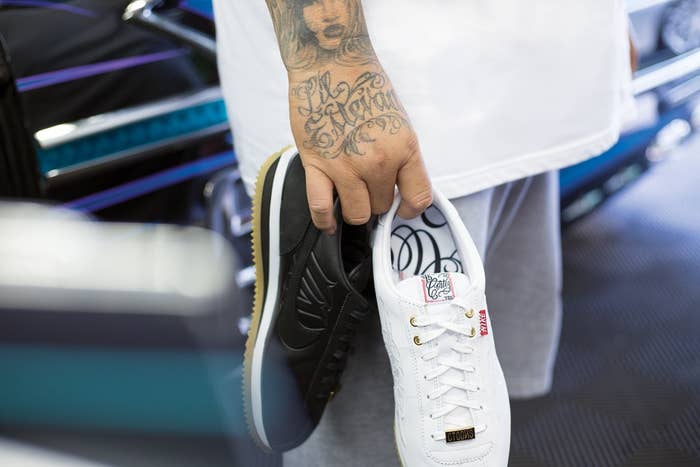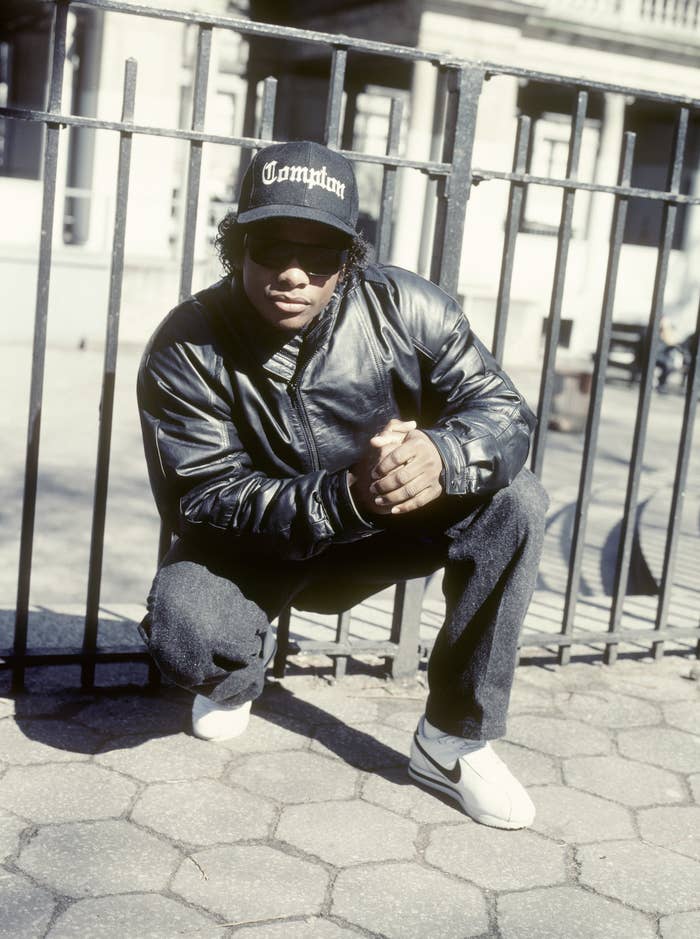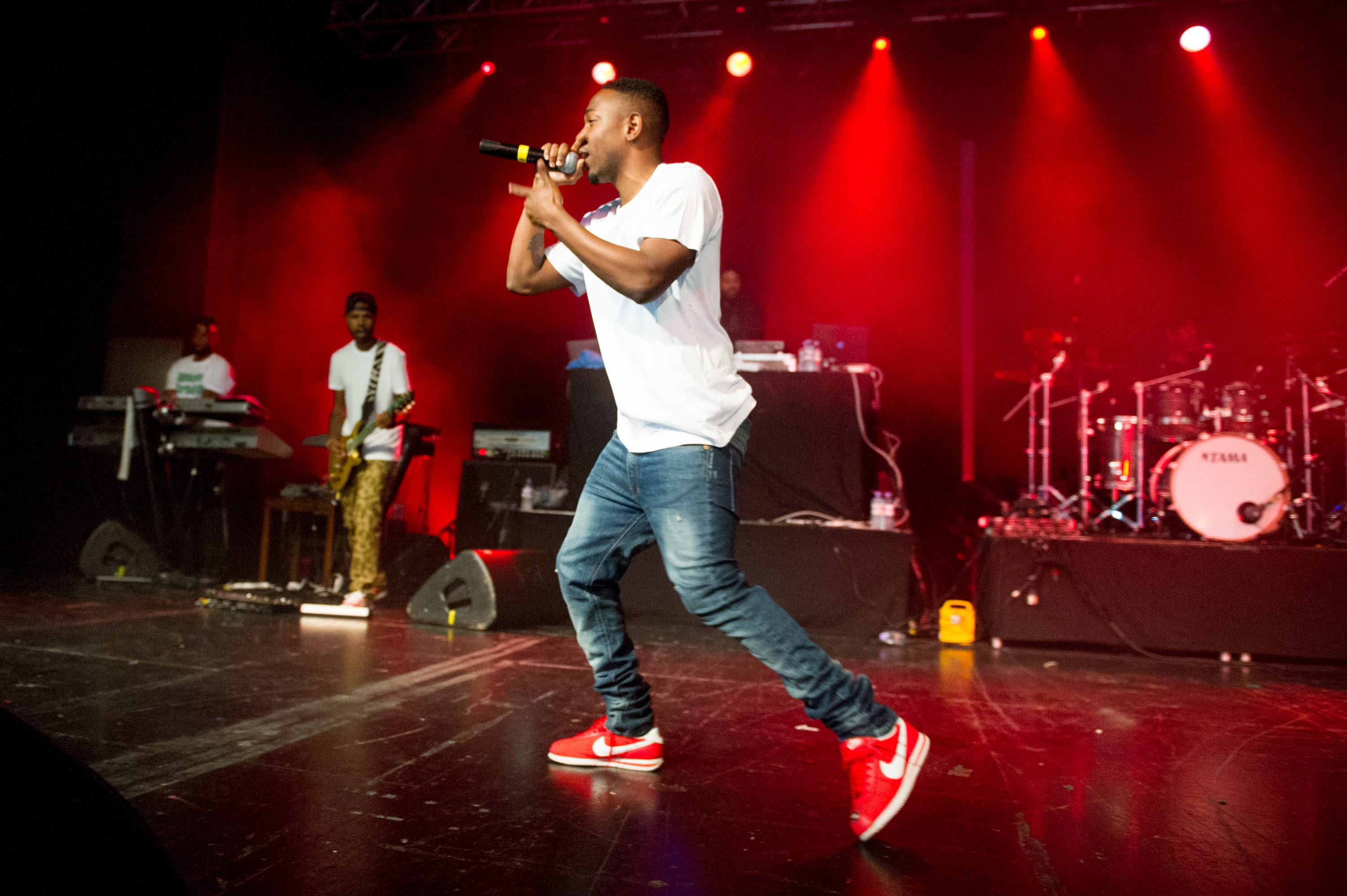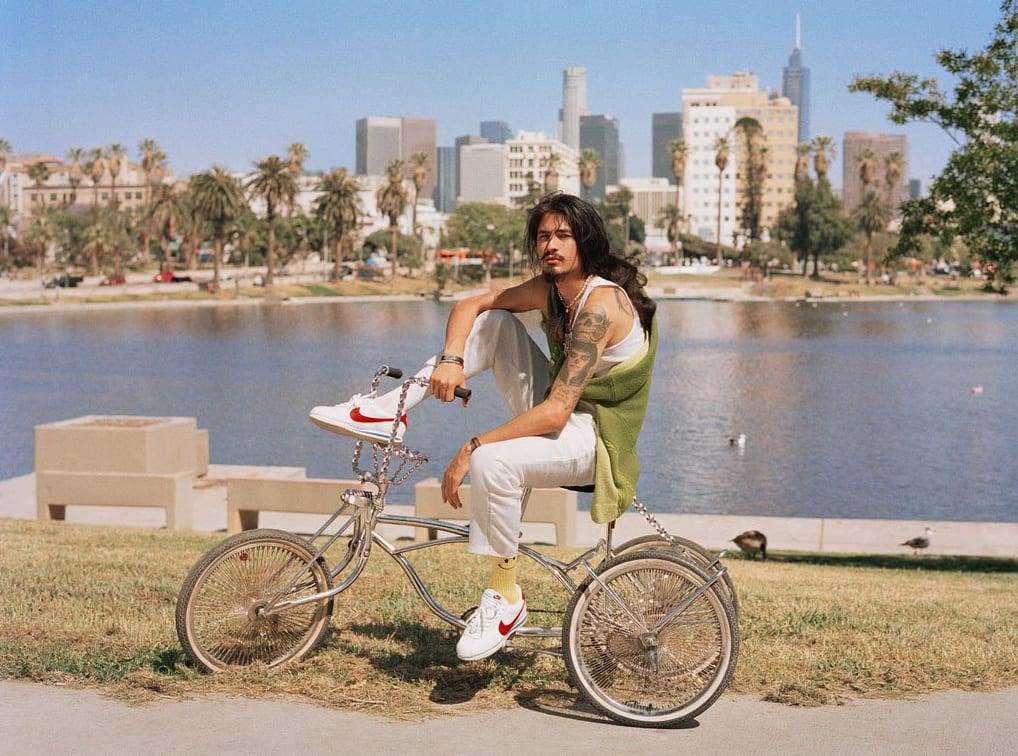
The Nike Cortez has always had a bit of controversy follow it.
It all started in 1968 when Nike co-founders Phil Knight and Bill Bowerman marketed the shoe under the “Aztec” name with Japanese footwear brand Onitsuka Tiger, which resulted in a cease and desist from Adidas. They’d go on to change the name to “Cortez,” after Spanish Conquistador Hernan Cortes, who’d defeated the Aztecs. Then, in 1972, Knight and Bowerman would bring their Cortez sneaker to their newly formed brand, Nike, while Onitsuka Tiger continued to produce the same sneaker. It took a legal battle between the two companies before it was agreed upon that Nike would make the Cortez while Onitsuka Tiger would produce the Corsair. And that was only the start of the Cortez’s history and where its authenticity would first start to take place.
It’s gone on to become Nike’s longest-standing sneaker and has been worn by the fictional and actual figures in pop culture from Forrest Gump and George Costanza to Farrah Fawcett, gang members, and Kendrick Lamar. It’s even made the pages of Vogue. The Cortez has traveled around the globe and across social lines, but its cultural home is Los Angeles.

“That’s our Air Force 1,” says Isack Fadlon, owner of Sportie L.A. a popular Cali sneaker store that has continuously sold the Cortez for the past three decades. “From day one the sneaker has been so ingrained in L.A. culture. It literally is the persona of L.A. and our West Coast style. Going into our store is like a museum, you can see everything from the original white and red to the newest versions.”
This year marks the 45th anniversary of the Cortez, and Nike has used this as an opportunity to revisit the sneaker’s history. This past weekend the brand released editions of the sneaker that were inspired by the Cortez’s original weartester, Kenny Moore. This summer has also seen pairs that pay homage to Compton and Long Beach, where the sneaker became a mainstay in street and gang culture in the ‘80s and ‘90s.
“I think it’s simple [as to] why the Cortez became a staple for L.A. youth: the shoe was for the ’hood. It wasn’t mainstream fashion like it is now. Accessibility and price point made that shoe what it is,” says Spanto, the co-owner of L.A. streetwear brand Born x Raised, who was raised in Venice, California. “They sold it at every swap meet, every hood shoe store for $20-$30. It fit the aesthetic of how we dressed in the ‘80s and ‘90s: classic American workwear, Dickies, and Ben Davis.”

Even though the Cortez was readily available in Los Angeles and wasn’t expensive, it was still a status symbol for those who were brave enough to wear it. “Everything has changed since then, but back then you didn’t wear that shoe unless you were about your shit,” Spanto says. “If you weren’t about your shit and you wore that shoe to school or the movies, best believe you were going to get pressed. Your shoes were probably going to be revoked.”
Fadlon, whose store is a Los Angeles institution, says he saw people stray away from the sneaker during its “dark ages.” “Darker periods in L.A. history caused the Cortez’s sales to dip,” he says. “But then it got reintroduced into pop culture in the ‘90s and it came back, because it has such a broad appeal to everyone.”
The darker period Faldon refers to isn’t just about the Cortez being adopted by gang culture, but also a result of a shift in the city after the L.A. Riots in 1992. Spanto recalls, “There was a bunch of tension building up to the riots in ‘92. When that happened, the music changed, the clothing changed. After the riots happened, it was like, the city belonged to the kids again.”

The Cortez became notorious in Los Angeles and the danger around wearing it was real. “You couldn’t wear those fucking things. I remember I had a pair in fourth grade. In fifth grade I went to get a pair, and my mom was like, ‘I’m not getting those shoes.’ Parents knew you couldn’t wear that shoe where we lived,” Spanto says. “Shit’s not gonna end up well if I buy you those shoes.”
Schools ended up banning the sneakers around the time Spanto’s mom wouldn’t let him wear them. He says that every black and white clothing item—Raiders and Kings gear and the black-and-white nylon Nike Cortez—ended up not being allowed. But it wasn’t without cause. After the Riots happened in L.A., the city opened itself up to real threats of violence. “The culture changed, the energy changed. Parents were trying to hide their kids from it. I didn’t understand, I just wanted to be down,” he says. “I grew up in Venice, and it’s like Disneyland now, but in the ‘90s it was wild as fuck. I’d look outside and see four dudes from my neighborhood, and I just wanted to act like them, dress like them, and hang with them. My mom was like, ‘No, there are too many cholos outside. I don’t want you dressing like them. You’re going to get shot.’ Gangbanging got so drastic in the ‘90s. It could have been something so simple as, ‘Yo, that boy has a pair of Cortez on, jump on him.’”
The perception that the Cortez was the only sneaker being worn in Los Angeles outside of Vans and Chuck Taylors, however, isn't quite the truth. “It was a regional sneaker, too. I grew up in the Four Corners, which is a pocket of the Westside that’s completely gentrified now. We didn’t wear Cortez. Our version was the Reebok Classic. I didn’t touch it after fourth grade,” Spanto says. “We were more into Polo, Nautica. We even wore Donna Karan. If we saw someone wearing Cortez and had that look, we knew they weren’t from around here. Or they were outdated. If we were on the boardwalk and we saw a bald head dude wearing a pair of Cortez, it was like, ‘Yo, hop on him.’”
The sneaker’s gang affiliations also initially pushed away 23-year-old Cortez collector David Navarro from the Bay Area, who runs the popular sneaker YouTube channel, DavidGotKicks, years after the sneaker’s heyday in Los Angeles. “It all started when my friends had them, but I found out they were gang-related and I wasn’t trying to get checked,” he says. “But I noticed it wasn’t a gang shoe anymore and it’s evolved into lifestyle. It’s a dream to see the sneaker get popular now, because they’re finally getting the mainstream recognition that they didn’t have a few years ago.”

The Cortez has also made the news recently because Kendrick Lamar, who vowed to only wear the sneaker in 2013, has left his sneaker deal with Reebok and signed a new one with Nike. And he’s back to wearing the Cortez, which has helped energize the sneaker and its connection with his hometown of Compton. “I think it’s dope that Kendrick wears that shoe, because he’s from L.A. and gets it. It’s part of his growing up,” Spanto says. “Things have changed, it’s more mellow now. Some of the cultural appropriation stuff that’s going on right now? I think that’s kinda weird. But the shoe wasn’t just made for us, it was made for something else. So it gets complicated. I went to Whole Foods a few months ago, and I tweeted, ‘There are way too many Cortez in here.’”
Although the Cortez is affiliated with Los Angeles, and even California as a whole, it still is Nike’s first sneaker for all intents and purposes, and the brand will continue to tell its story for years to come, for better or worse. “The Cortez put Nike on the map in an organic way,” Fadlon says. “Now they’re trying to push and manufacture the excitement around the shoe, and it doesn’t feel as authentic as it once was.”
But once all of that wears away, there’s still going to be a great shoe, one that Fadlon wore back in his days at Fairfax High School in Los Angeles. “It has its moments. It comes and goes, but it will never go away,” he says.

